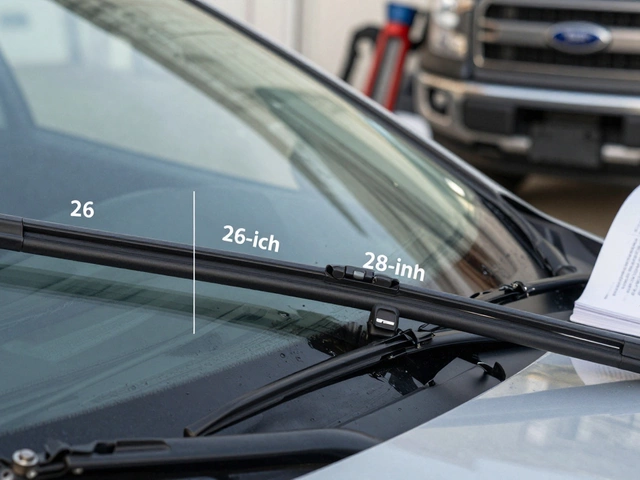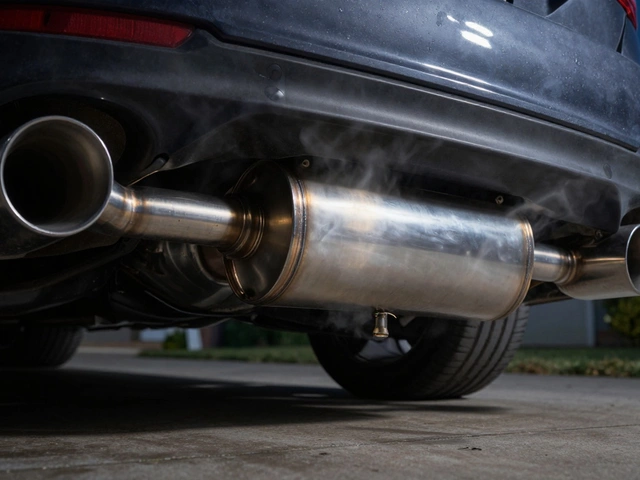You fill up your oil, start the car, and something feels off. Maybe it doesn’t run as smoothly or you hear odd sounds. Ever worry you put in the wrong oil? You’re not alone. Turns out, grabbing the wrong bottle isn’t the end of the world—but it can definitely mess things up if you ignore it.
Motor oil isn’t just all the same slippery stuff in different packages. Your car depends on oil for lubrication, cooling, cleaning, and even fuel efficiency. Pick the wrong type, and you’re risking poor performance, higher wear, and sometimes even engine damage. Some cars may tolerate it for a short time, but older engines or fancy new models can be extra picky.
It’s not just about ‘thick vs. thin’ either. Oils come with numbers like 5W-30 or 10W-40 because they behave differently in cold and hot conditions. If you use oil that’s too thick, your engine struggles to move parts at startup. Too thin, and you don’t get enough protection when it heats up. Getting it wrong can lead to problems fast—think rough idling, weird noises, or that dreaded ‘check engine’ light.
- How Motor Oil Actually Works
- What Happens When You Use the Wrong Oil
- What To Do If You’ve Used the Wrong Oil
- Tips to Prevent Oil Mistakes
How Motor Oil Actually Works
Think of motor oil as your engine’s lifeblood. It’s way more than just slippery goo. The oil moves through tiny passages, coating metal parts so they don’t grind on each other and wear out. That alone saves you a ton of money on repairs over time.
Now, your engine runs hot—sometimes hotter than a summer barbecue. Oil carries away a lot of that heat and keeps things operating at a safe temperature. Without it, metal parts would literally weld themselves together. Oil also grabs gunk, dirt, and carbon, then traps them in the oil filter instead of letting them clog up engine parts.
- Engine oil creates a thin film between pistons, bearings, and the crankshaft, reducing friction and preventing metal-on-metal contact.
- It helps seal the microscopic gaps between piston rings and cylinder walls so power doesn’t leak away.
- Modern oils even have detergents and additives. These break up sludge, stop rust, and keep seals soft so they don’t dry out and leak.
To show why oil quality and the right oil type matter, check out these numbers—
| Function | Impact on Engine |
|---|---|
| Lubrication | Reduces friction, limits wear on moving parts |
| Cooling | Transfers up to 40% of heat away from combustion areas |
| Cleansing | Removes carbon, dirt, and metal particles |
| Sealing | Keeps power in, prevents leaks |
That’s why every car has a specific oil grade that matches the engine’s design. Put in the wrong stuff and it can’t do these jobs well. Saving a few bucks upfront with cheap oil or the wrong viscosity ends up costing more in repairs and headaches.
What Happens When You Use the Wrong Oil
So, what actually goes down when you put the wrong oil in your car? First off, a lot depends on how far you stray from the stuff your car’s supposed to use. Let’s say your car requires 5W-30 and you grab a heavier oil, like 10W-40. On a cold morning, your engine might struggle to start, and moving parts don’t get lubed up quickly enough. That’s a recipe for more friction and faster wear. Your engine has to work harder, and you might even notice your gas mileage gets worse.
It’s the opposite story if the oil’s too thin. Pick something lighter than recommended, and the protection breaks down when your engine gets hot. The oil can’t maintain a strong layer between metal parts, so they grind more. In some cases, especially with turbo engines or those running hot, you’ll risk serious damage. Oils also have additives for cleaning and protecting; the wrong blend can mess with seals and let sludge build up faster. That’s never good news.
One common sign you’ve used the wrong oil is a ticking noise right after startup. Your engine isn’t getting oil flow fast enough. You might even see the oil pressure warning light pop up on the dash. Sometimes you’ll catch a burning smell or even oil leaks if seals shrink or swell because of mismatched additives.
Mixing in a totally wrong type, like tossing synthetic into an old car made for conventional oil, can cause leaks or burnt oil because old seals just aren’t ready for modern chemicals. But using synthetic oil in modern engines is usually fine—most newer cars are built for it or can handle blends.
Check out this quick cheat sheet:
| Wrong Oil Result | Likely Issue |
|---|---|
| Too thick (higher number) | Hard starts, poor fuel economy, faster wear at startup |
| Too thin (lower number) | Reduced protection, noisy engine, worn parts |
| Wrong type (synthetic vs. conventional) | Leaking seals, burnt oil, possible sludge |
Here’s the deal—driving a few dozen miles with the wrong oil probably won’t blow up your engine overnight, especially if it’s just a one-off mix-up. But if you keep using the wrong stuff or drive it for months, real damage is on the table, especially in hot or cold weather.
If your car’s under warranty, using oil that doesn’t meet the manufacturer’s specs can even void coverage. That’s a harsh surprise most people don’t want to deal with. Always double-check your owner’s manual or oil cap for what your engine actually needs.
Keeping the engine oil right is one of the easiest ways to avoid headaches and extra bills at the shop.

What To Do If You’ve Used the Wrong Oil
So you’ve just realized you used the wrong oil in your car. Don’t panic—this mistake happens more often than you think. The good news? It rarely destroys your engine right away. But you do need to deal with it sooner rather than later.
First, check if you notice any changes in how your car runs. Is the engine making more noise? Any oil leaks or warning lights? If nothing obvious seems wrong and you only topped up a little, you might be okay for a short period. Modern engines are built with some tolerance for minor mistakes. But using the wrong engine oil repeatedly, or running on a totally unsuitable grade, can cause problems like poor lubrication, higher wear, and even clogged oil passages.
If you did a full oil change or poured in a lot of the wrong oil, or you’re driving a newer car that’s extra picky, it’s safer to swap it out. Here’s what you can do next:
- Stop driving if you hear weird noises, see warning lights, or notice trouble when starting the car.
- Check your owner’s manual for the recommended oil type and grade. Don’t just guess—car makers specify for a reason.
- If possible, do an oil and filter change. Most quick lube shops can handle this fast, and it gets all the bad oil out of your system.
- If you’re stuck or it’s just a small amount, top up with the correct oil as soon as you can. Mixing is not ideal but is way better than running too little oil.
- Pay attention over the next few drives—listen for new sounds, and keep an eye on oil level and the ‘check engine’ light.
One extra tip: synthetic oils are often more forgiving, but don’t mix different oil types if you can avoid it. If you’re ever unsure, getting a professional opinion saves hassle—and maybe your engine.
Tips to Prevent Oil Mistakes
Mistakes with engine oil aren’t just a headache—they can hit your wallet hard. Most modern engines are built tighter than older ones, making oil choice more important than ever. But if you follow a few habits, you’re way less likely to mess up and put the wrong stuff in your engine.
- Know Your Manual: The best oil for your car isn’t a secret—your owner’s manual spells it out. Look for the specific grade and type. If you lost your manual, you can usually find this info on the oil cap or a sticker under your hood.
- Read the Label: Never just grab a bottle that looks familiar or is on sale. Check the numbers—are they what your car asks for? Don’t get tripped up by stuff like “synthetic blend” or “high mileage” if that’s not right for your engine.
- Double-Check at the Shop: Even the pros can make mistakes. If you get oil changes done somewhere, ask exactly what oil they’re using. Service shops sometimes use bulk oil that fits ‘most’ cars, but yours might have special needs.
- Stick to a Schedule: Changing your oil on time (or sooner, if you do a lot of short trips or it’s super hot/cold out) means less worry about leftover wrong oil causing long-term trouble.
- Save the Receipts: Whenever you buy or get oil changed, keep the receipt. If you do run into trouble, you’ll have proof of what went in—and that helps with warranty claims or when talking to mechanics.
Some numbers if you’re wondering how common this problem is: a survey by AAA found that up to one in five drivers can’t name the correct oil for their car, and over 30% have admitted to just taking whatever is suggested by a mechanic or store clerk.
| Mistake | Potential Impact |
|---|---|
| Used wrong viscosity | Poor lubrication, more wear, possible engine noise |
| Mixed synthetic and conventional by accident | Usually okay short-term, but less effective long-term |
| Skipped checking oil level | Risk of running too low, which can wreck an engine quickly |
| Didn’t follow change intervals | Dirty oil = extra engine wear and sludge |
Don’t let tips just become good ideas—make checking and double-checking part of your routine. Your engine will thank you with fewer problems and more miles.








